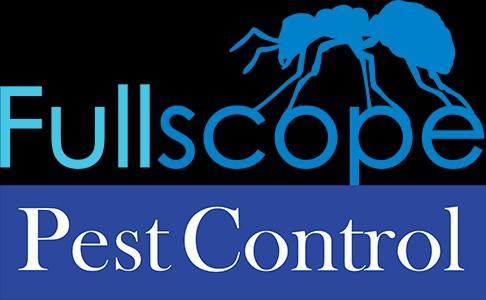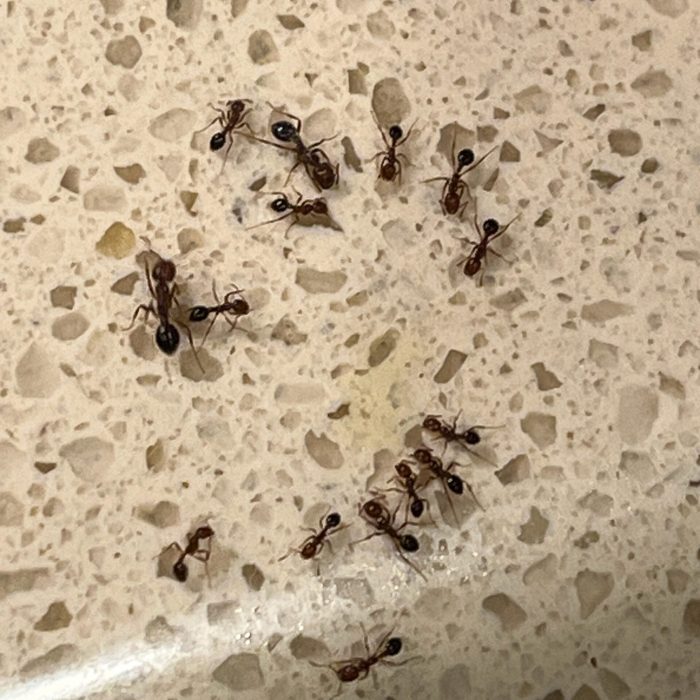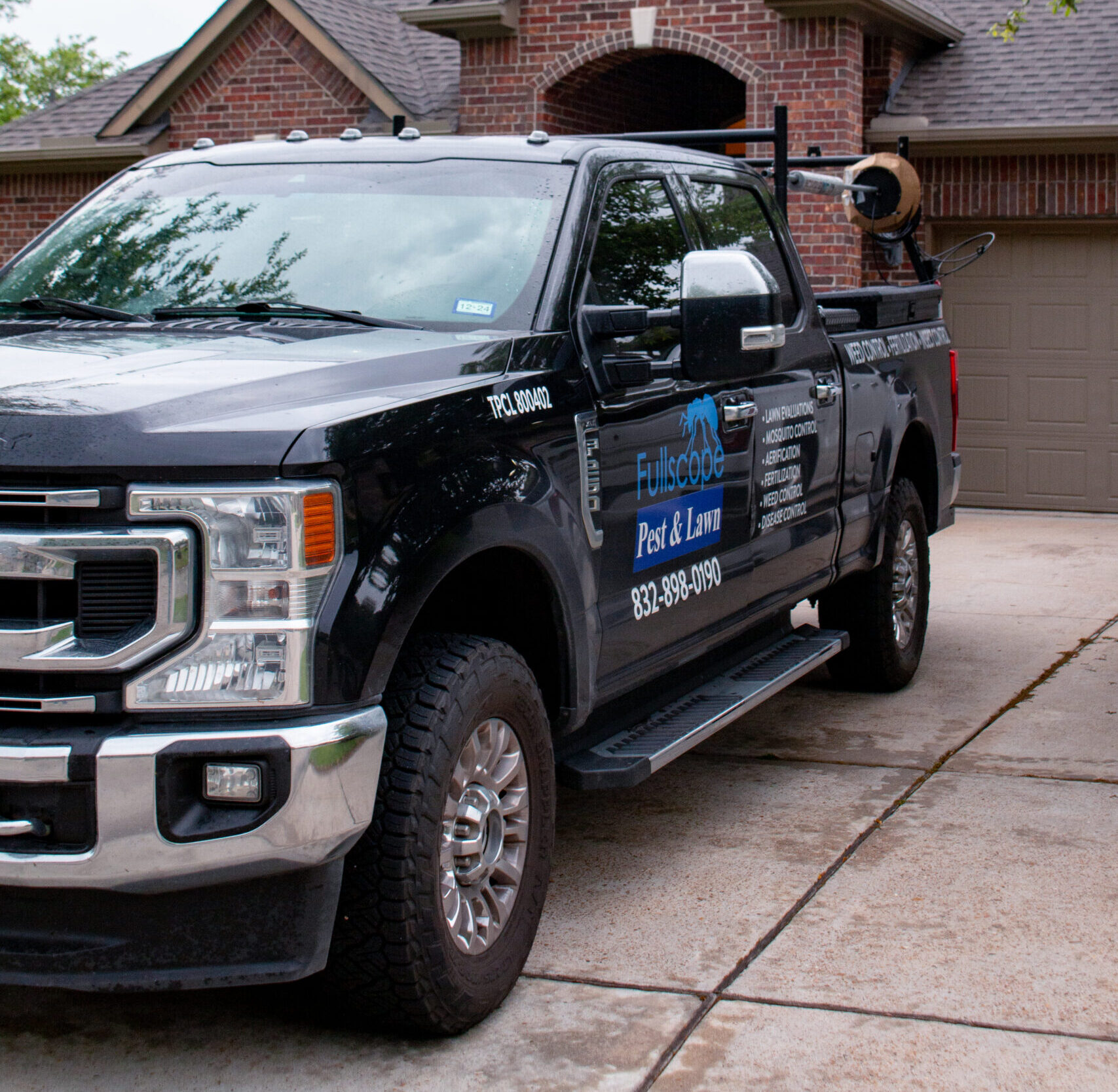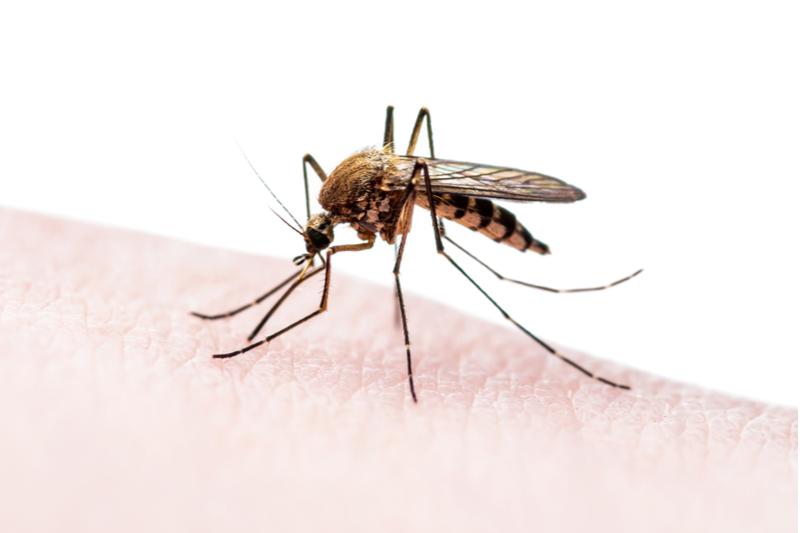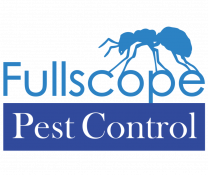Key Highlights
- Termites with wings, also known as swarmers or alates, are a sign of a mature termite colony and can indicate a significant infestation.
- Flying termites are the reproductive members of a termite colony and their primary role is to start new colonies.
- Identifying winged termites in your home is important as it can be a warning sign of a termite problem and potential structural damage.
- Physical characteristics of flying termites include straight antennae, longer set of front wings, and a shorter set of back wings.
- It is important to distinguish between flying termites and flying ants as they have different characteristics and behaviors.
- Seeing flying termites should prompt immediate action to prevent further damage and to protect your home from termite infestation.
Introduction
Termites are a common pest that can cause significant damage to homes and buildings. While all termites are problematic, termites with wings, also known as swarmers or alates, are especially concerning. These winged termites are the reproductive members of a termite colony and their primary role is to start new colonies. Seeing flying termites in your home or property can be a sign of a significant termite problem and potential structural damage.
Understanding winged termites and being able to identify them is crucial in taking the necessary steps to protect your home. By recognizing the physical characteristics of flying termites and knowing the difference between termites and other flying insects like ants, you can be proactive in preventing termite infestations and minimizing damage to your property.
In this blog, we will explore the lifecycle of a termite, why termites grow wings and fly, how to identify winged termites in your home, the significance of seeing flying termites, immediate steps to take upon sighting, inspecting your home for termite damage, professional vs. DIY termite control, and preventative measures against termite infestations. By the end of this blog, you will have a better understanding of winged termites and the signs of trouble in your home, allowing you to take the necessary actions to protect your property.
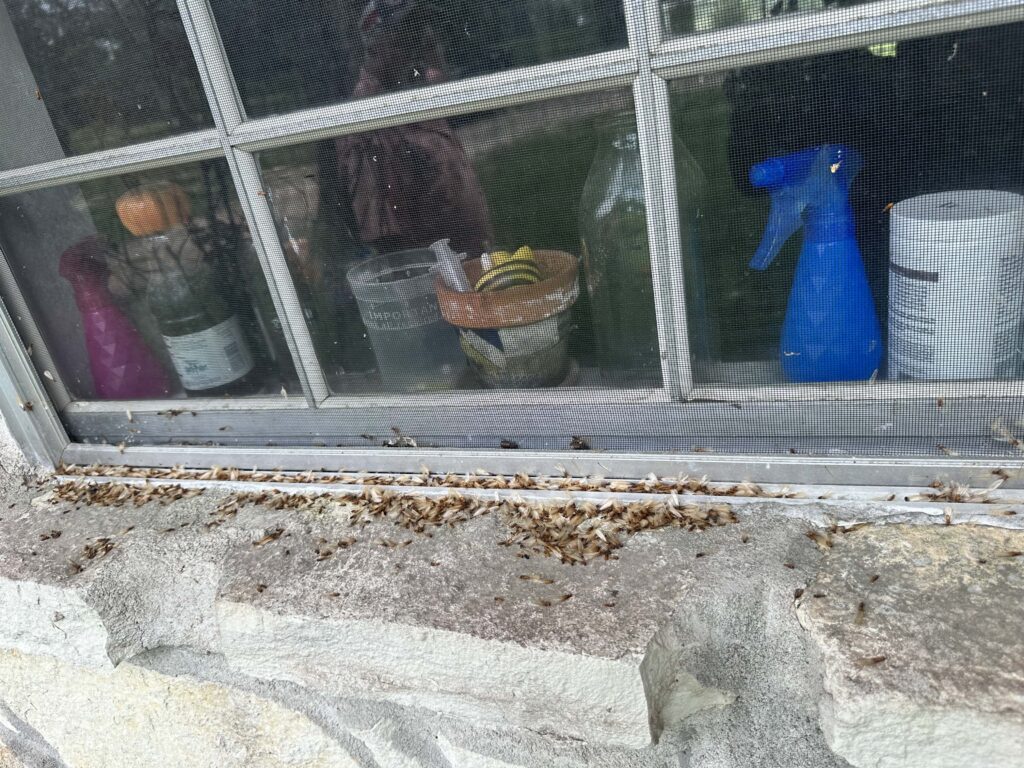
Understanding Winged Termites
Recommended Read: 10 Warning Signs of Termites
To understand winged termites, it is important to first understand the termite life cycle. Termites go through several stages in their lifecycle, including the reproductive stage where they develop wings and become winged termites, also known as alates or swarmers.
Winged termites are the reproductive members of a termite colony and their primary role is to start new colonies. They are larger than worker termites and are equipped with wings, allowing them to fly. These winged termites are responsible for leaving their colony during a phenomenon known as nuptial flight, where they mate and establish new colonies.
Identifying winged termites in your home is a warning sign of a termite problem. Their presence indicates the potential for significant damage to your property. By understanding the behavior and characteristics of winged termites, you can take the necessary steps to protect your home from infestation and minimize the risk of structural damage.
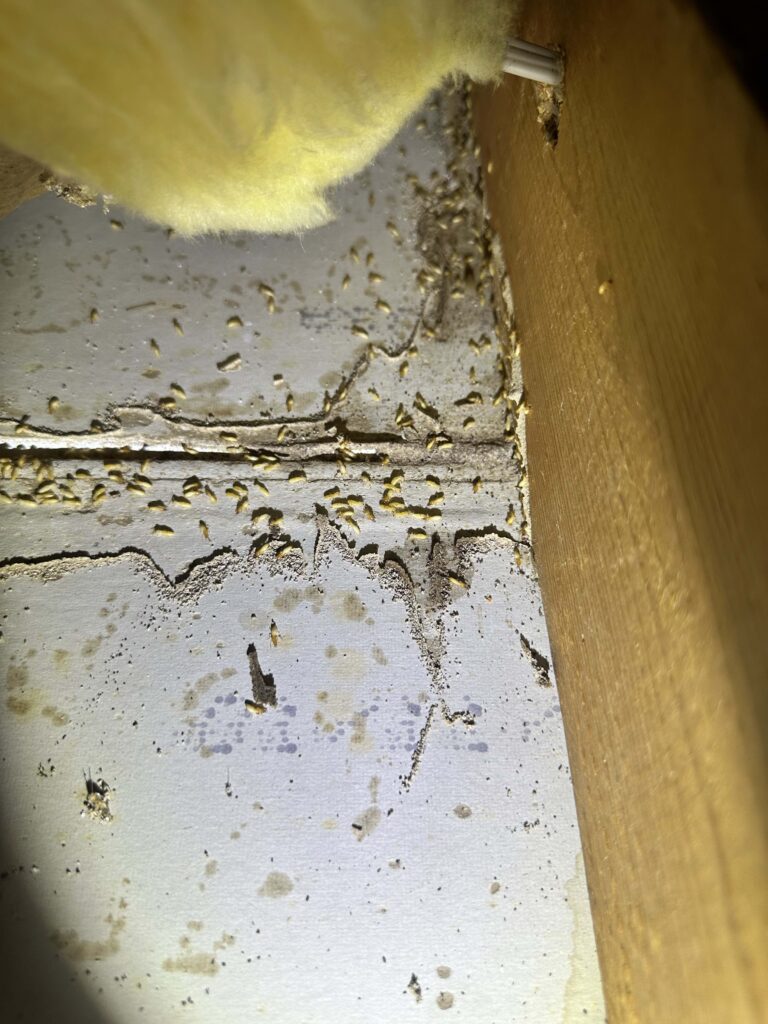
The Lifecycle of a Termite
The termite life cycle consists of several stages, starting with the egg stage, followed by the nymph stage, and ending with the adult stage. During the reproductive stage, some termites develop wings and become winged termites, also known as alates or swarmers.
The reproductive termites, or swarmers, are larger than worker termites and are equipped with wings. They are responsible for leaving their colony during a phenomenon known as nuptial flight. During this flight, the male and female swarmers mate, after which the male dies and the female becomes the queen of a new colony.
In the new colony, the queen lays eggs, which hatch into nymphs. The nymphs develop into different castes, including workers, soldiers, and more reproductive termites. The workers are responsible for foraging for food, building and repairing the nest, and taking care of the other termites in the colony.
Understanding the lifecycle of a termite is essential in identifying and controlling termite infestations. By knowing when and how termites develop wings and become winged termites, you can take the necessary steps to address the problem and protect your home from further damage.
Why Termites Grow Wings and Fly
Termites grow wings and fly as part of their reproductive process. The flight, known as nuptial flight, occurs when the conditions are right for the termite colony to expand and establish new colonies.
During nuptial flight, winged termites emerge from their nest in large swarms, usually after a heavy rain when the weather begins to warm. These swarms are a common sign of a nearby termite infestation. The winged termites, or swarmers, are the reproductive members of the colony and their primary role is to mate and start new colonies.
The swarmers search for a suitable location to establish their new colony, and if they successfully mate and find the right conditions, they will shed their wings, become the king and queen of their new termite kingdom, and begin the process of building a new colony.
Understanding why termites grow wings and fly can help homeowners recognize the signs of a termite infestation and take immediate action to prevent further damage. By addressing the problem early, you can protect your home from the destructive effects of termites and minimize the risk of a full-blown termite infestation.
Identifying Winged Termites in Your Home
Identifying winged termites in your home is an important step in recognizing a potential termite problem and taking immediate action to address it. Winged termites, also known as termite swarmers or alates, can often be seen flying around windows, doors, vents, or light fixtures.
The physical characteristics of winged termites include straight antennae, a thicker waist, and a pair of wings that are all the same length. These winged termites are attracted to light and are often found near sources of light in your home.
The presence of winged termites in your home is a warning sign of a potential termite infestation and structural damage. If you notice winged termites or discarded wings in your home, it is important to contact a professional pest control service to assess the situation and take appropriate measures to eliminate the termites and protect your home.
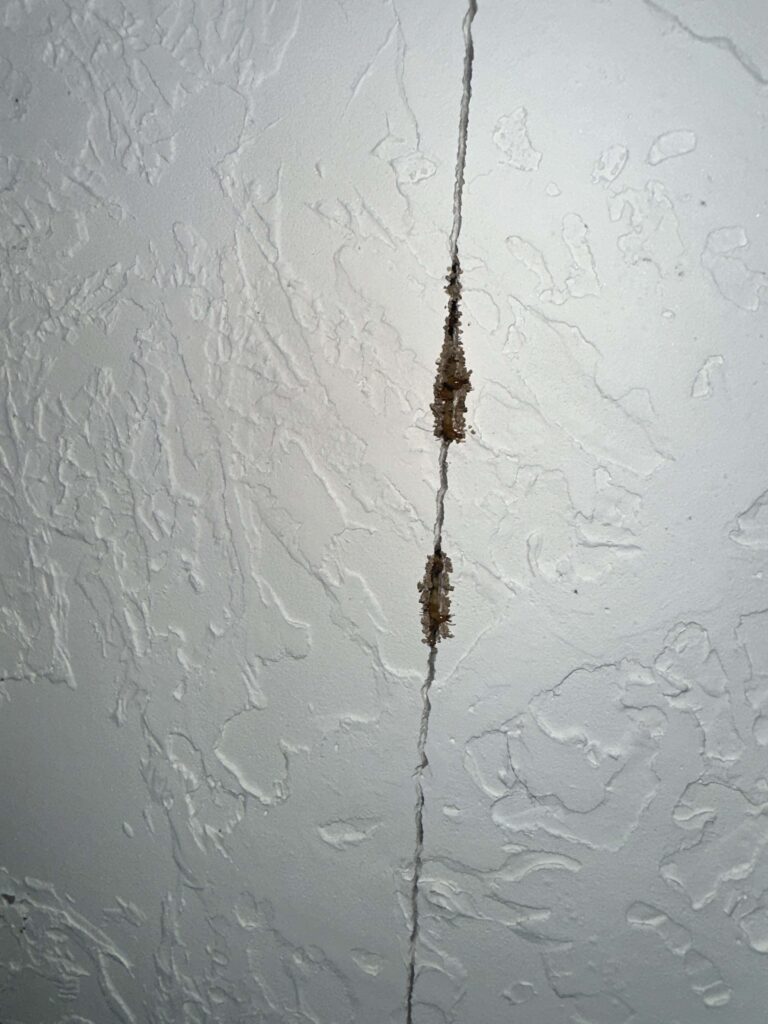
Physical Characteristics of Flying Termites
Flying termites, or winged termites, can be identified by their specific physical characteristics. These characteristics include:
- Straight antennae: Flying termites have straight antennae, unlike flying ants which have elbowed antennae.
- Longer set of front wings: The front wings of flying termites are longer than their back wings.
- Shorter set of back wings: The back wings of flying termites are shorter than their front wings.
- Thicker waist: Flying termites have a thicker waist compared to flying ants.
These physical characteristics can help distinguish flying termites from other flying insects, particularly flying ants. By recognizing these characteristics, homeowners can be proactive in identifying and addressing termite infestations to protect their homes from structural damage.
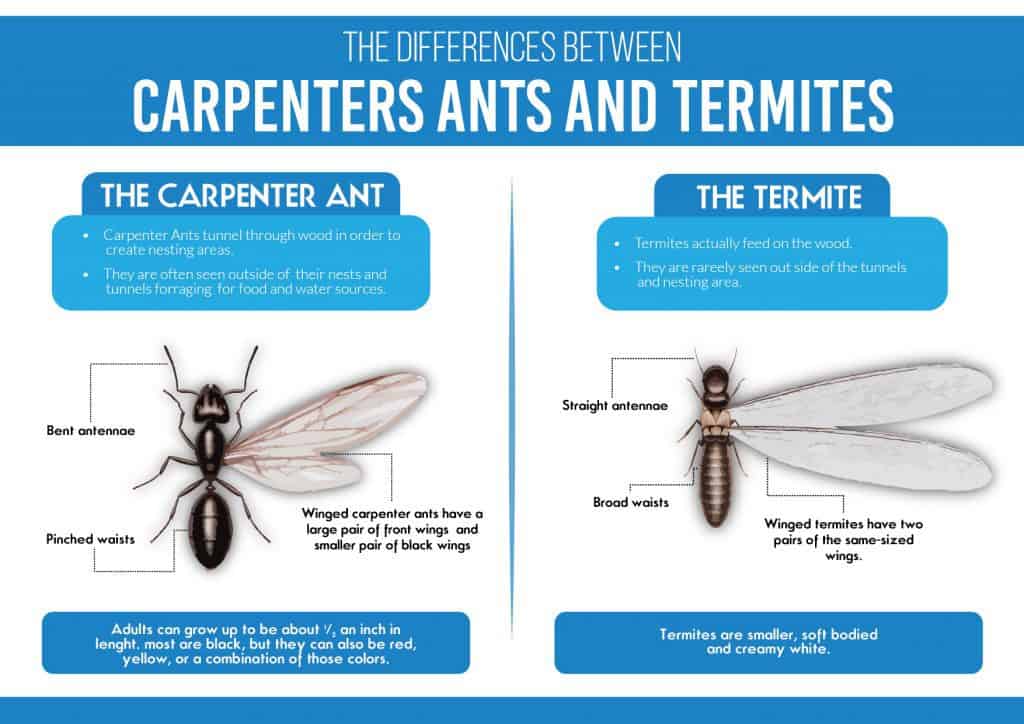
Difference between fly ants and flying termites
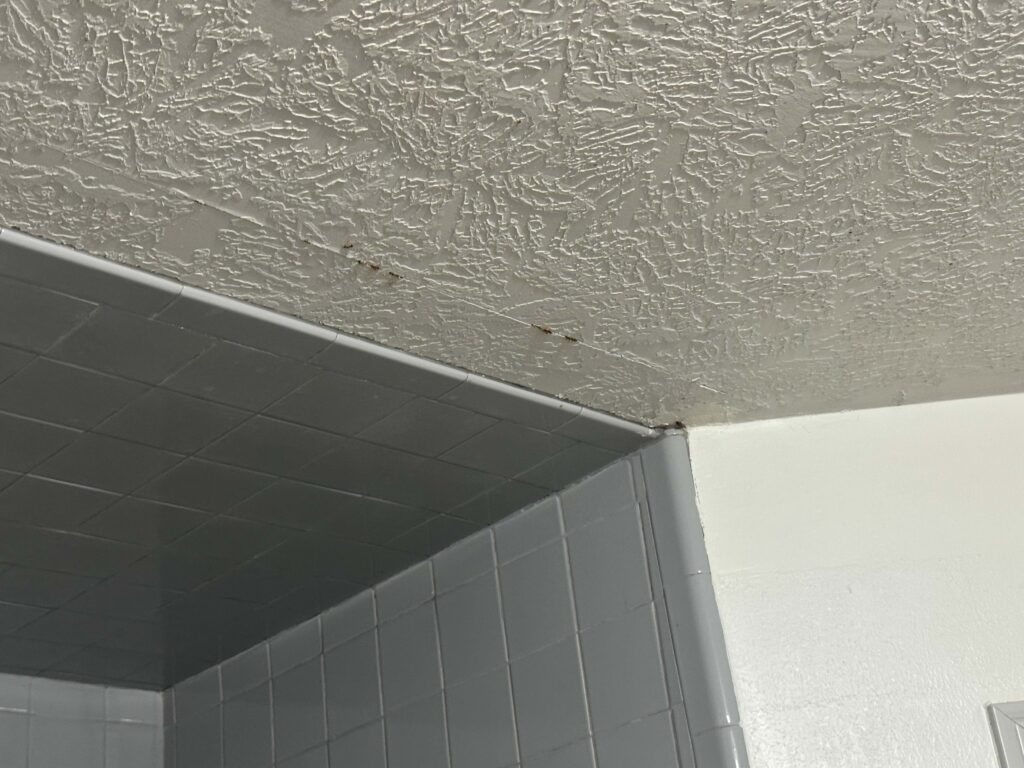
Common Mistakes: Termites vs. Ants
It is common for people to mistake flying termites for flying ants. However, there are distinct differences between the two:
| Termites | Ants |
| Straight antennae | Slight curve in antennae |
| Two pairs of wings (equal length) | Two pairs of wings (front wings longer than back wings) |
| Straight, beaded body | Pinched waist with large abdomen |
| Translucent wings | Translucent wings with larger front wings |
| Cause structural damage | Usually do not cause as much structural damage |
| It is important to correctly identify the insects to determine the appropriate treatment for an infestation. If you are unsure, it is recommended to consult a professional pest control service. |
The Significance of Seeing Flying Termites
The sight of flying termites should not be taken lightly as it signifies a termite problem and a potential termite infestation. These winged termites are a warning sign that there is a mature termite colony nearby, which can cause significant structural damage if left untreated. It is crucial to take immediate action upon sighting flying termites to prevent further damage to your home. Ignoring the presence of flying termites can lead to severe structural issues and expensive repairs in the future. Consulting a professional pest control service is strongly recommended to effectively deal with the termite infestation.
What It Means for Your Home
The presence of flying termites in your home is a cause for concern as it indicates that your property is a suitable location for termite colonies. Termites are wood-destroying insects that feed on cellulose-based materials, including the wooden structure of your home. If left unchecked, termite colonies can cause significant structural damage, compromising the integrity of your house. It is important to address the termite infestation promptly to prevent further deterioration of your home and avoid costly repairs. Taking immediate action upon sighting flying termites is crucial to control the infestation and protect your property from further damage.
Immediate Steps to Take Upon Sighting
Upon sighting flying termites, it is important to take immediate action to prevent the termite swarm from establishing a colony in your home. The first step is to contact a professional pest control service that specializes in termite control. They will conduct a thorough inspection of your property to determine the extent of the infestation and recommend the appropriate treatment plan. It is crucial not to disturb the termites or attempt to handle the infestation on your own, as this can make the problem worse. Professional pest control experts have the knowledge, experience, and tools to effectively eliminate termites and prevent further damage to your home. Taking immediate action will help minimize the potential for structural damage and protect your property.
Inspecting Your Home for Termite Damage
Inspecting your home for termite damage is crucial to catch infestations early. Look for mud tubes, which are pathways that termites use to reach wood. Check for hollow-sounding wood, as termites eat wood from the inside out. Peeling or bubbling paint can also indicate termite activity. Conduct a thorough inspection in key areas such as basements, crawl spaces, and attics. Utilize tools like screwdrivers and flashlights to inspect hard-to-reach areas. Early detection is key to preventing severe structural damage.
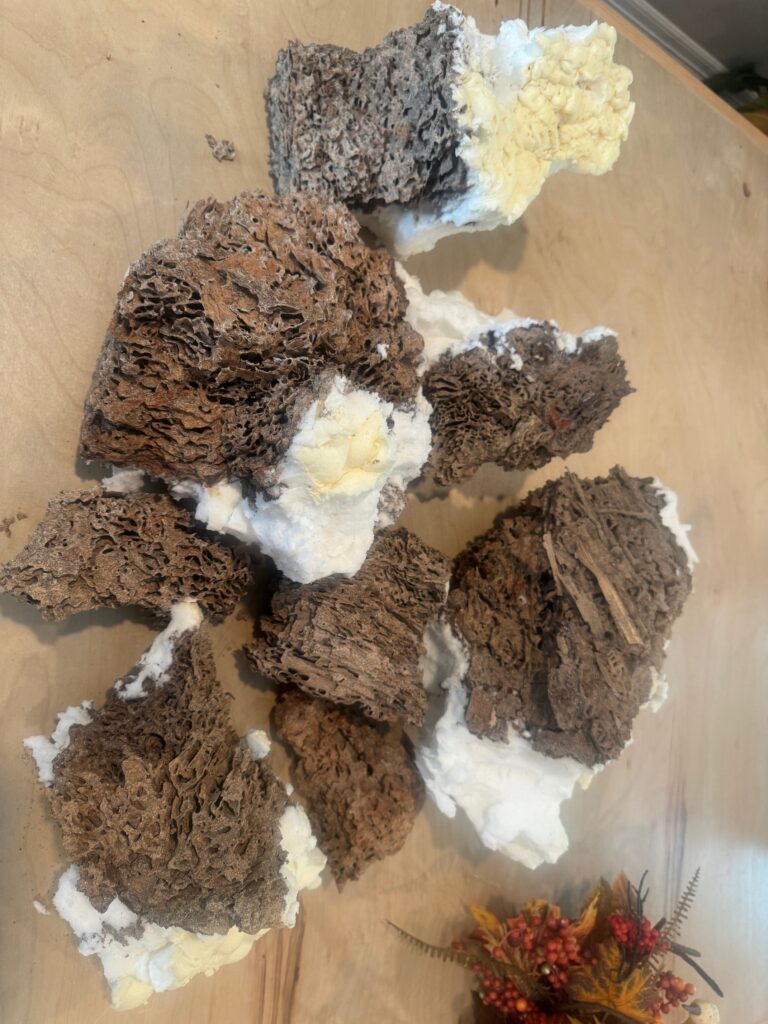
Key Areas to Check for Termite Activity
When inspecting your home for termite activity, there are specific areas you should pay close attention to:
- Exterior walls: Look for mud tubes along the foundation, which are created by subterranean termites to travel from the soil to the wood.
- Interior walls: Check for any signs of termite damage, such as hollowed or damaged wood.
- Attic and crawl spaces: Inspect these areas for mud tubes, termite droppings (frass), or discarded wings.
- Wooden structures: Examine wooden beams, furniture, and other wooden items for any signs of termite activity.
- Windows and doors: Check for any cracks or gaps that could provide entry points for termites.
By thoroughly inspecting these key areas, you can identify early signs of termite activity and take immediate action to prevent further damage to your home.
Tools and Techniques for Effective Inspection
To conduct a thorough inspection for termite activity, it is important to have the right tools and techniques:
- Flashlight: Use a flashlight to illuminate dark areas, such as crawl spaces and attics, to detect any signs of termite activity.
- Moisture meter: A moisture meter can help identify areas with high moisture, which can be attractive to termites.
- Probing tool: Use a probing tool, such as a screwdriver, to check for hollowed or damaged wood.
- Termite detection dogs: Trained termite detection dogs can be used to locate hidden termite infestations that may be difficult to detect visually.
By using these tools and techniques, you can conduct a thorough inspection and identify any signs of termite activity, allowing for prompt treatment and prevention of further damage.
Professional vs. DIY Termite Control
When it comes to termite control, there are both professional and DIY options available. However, it is important to consider the advantages and disadvantages of each:
Professional pest control:
- Experienced professionals have the knowledge and expertise to effectively eliminate termites and prevent further infestation.
- They use specialized equipment and treatments that are not available to the general public.
- Professional pest control services often provide warranties and guarantees for their work.
DIY solutions:
- DIY solutions may be more cost-effective initially.
- They give homeowners a sense of control over the treatment process.
It is important to note that termite control is a complex task, and DIY solutions may not be as effective as professional treatments. Consulting a professional pest control service is recommended for severe infestations or when dealing with structural damage caused by termites.
When to Call in the Experts
Calling in the experts Fullscope Pest Control is necessary in certain situations to effectively deal with termite infestations:
- Severe infestations: If the termite infestation is extensive and has caused severe structural damage, it is best to call in professional pest control services. They have the experience and expertise to handle severe infestations effectively.
- Professional treatment: Some termite species, such as Formosan termites, require specialized treatment methods that are best handled by professionals. Rentokil Initial plc is a reputable pest control company that specializes in termite control.
- Structural damage: If the termite infestation has caused significant structural damage to your home, it is crucial to consult professionals who can assess the extent of the damage and provide appropriate treatment.
In these situations, professional treatment is essential to ensure the complete eradication of termites and prevent further damage to your property.
DIY Solutions for Early Stage Infestations
For early stage termite infestations, there are DIY solutions that can be effective in controlling the problem:
- Liquid insecticide: Using a liquid insecticide specifically designed for termites can help eliminate the infestation. Follow the instructions on the product label and apply it to areas where termite activity is visible.
- Termite baits: Termite baits are another DIY solution that can be effective in controlling termite infestations. These baits contain a slow-acting poison that is carried back to the colony, eventually eliminating the entire colony.
It is important to note that DIY solutions may not be as effective for severe infestations or when dealing with certain termite species. Consulting a professional pest control service is recommended for severe infestations or when structural damage has occurred.
Preventative Measures Against Termite Infestations
Taking preventative measures against termite infestations can help protect your home from potential damage. Here are some tips for preventing termite infestations:
- Remove wood debris: Keep firewood, lumber, and other wooden debris away from your home’s foundation.
- Maintain proper drainage: Ensure that your gutters and downspouts direct water away from your home to prevent excess moisture, which attracts termites.
- Trim vegetation: Trim bushes and trees away from your home to eliminate potential termite pathways.
- Regular inspections: Regularly inspect your home for signs of termite activity, such as mud tubes or discarded wings.
By implementing these preventative measures and conducting regular inspections, you can reduce the risk of termite infestations and protect your home from potential damage.
Landscaping Tips to Deter Termites
Landscaping can play a role in deterring termites from your property. Here are some landscaping tips to help prevent termite infestations:
- Use termite-resistant plants: Certain plants, such as marigolds, vetiver grass, and catnip, are known to repel termites. Planting these around your home can act as a natural deterrent.
- Avoid wood-to-soil contact: Ensure that wooden structures, such as decks or fences, do not make direct contact with the soil. Use concrete footings or metal brackets to create a gap between the wood and the ground.
- Regularly inspect mulch: Mulch can provide a conducive environment for termites. Regularly inspect the mulch around your home and replace it if necessary.
- Proper drainage: Ensure that your yard has proper drainage to prevent excess moisture, as termites are attracted to damp environments.
By implementing these landscaping tips, you can reduce the risk of termite infestations and protect your property from potential damage.
Regular Maintenance and Inspections
Regular maintenance and inspections are crucial in preventing termite infestations. Here are some steps to include in your regular maintenance routine:
- Conduct annual termite inspections: Schedule annual inspections with a professional pest control service to check for any signs of termite activity.
- Seal cracks and gaps: Regularly inspect your home for any cracks or gaps that could provide entry points for termites. Seal them promptly to prevent infestations.
- Trim vegetation: Trim bushes and trees away from your home to eliminate potential termite pathways.
- Maintain proper drainage: Ensure that your gutters and downspouts are clean and functioning properly to prevent excess moisture, which attracts termites.
By consistently maintaining your home and conducting regular inspections, you can detect and address termite infestations early, reducing the risk of significant damage and costly repairs.
The emergence of termites with wings is a clear sign of a termite infestation in your home. When winged termites take flight from the nest, it is a sign of a termite swarm and potential trouble for your property. Another sign to watch out for is discarded wings, which indicate the presence of termites in your home. It is important to address a termite infestation promptly to prevent further damage to your property.
Conclusion
If you suspect termite activity in your home, it’s crucial to act promptly. Understanding the lifecycle of winged termites and differentiating them from ants is key. Identifying flying termites signifies potential trouble for your property. Take immediate action upon sighting them by inspecting for damage and considering professional or DIY control options. Preventative measures, regular maintenance, and landscaping tips can deter infestations. For further assistance or to address any concerns, feel free to get in touch with us for expert advice and guidance. Your home’s structural integrity and peace of mind are our top priorities.

Frequently Asked Questions
Can termite wings be found without an active infestation?
Yes, termite wings can be found even without an active infestation. The presence of termite wings is a warning sign that there may be a termite colony nearby. Termite swarmers shed their wings after mating and finding a suitable location to establish a new colony. Finding termite wings is a strong indication that termites are or were present in the area, and immediate action should be taken to prevent an infestation.
How often should I inspect my home for termites?
It is recommended to inspect your home for termites at least once a year. Regular inspections can help detect termite activity early and allow for preventative measures to be taken. It is especially important to inspect after heavy rainfall or during times of the year when termite infestations are more common, such as in the spring.
What are the first signs of termite damage?
The first signs of termite damage may include the presence of mud tubes on exterior walls or discoloration and blistering of wood. You may also notice hollowed or damaged wood, sagging floors, or the sudden appearance of termite swarmers. These signs should prompt immediate action to prevent further damage.
Are there eco-friendly solutions for termite control?
Yes, there are eco-friendly solutions for termite control. Some options include the use of boric acid, which is a natural and low-toxicity substance that can be effective against termites. Another eco-friendly solution is the use of nematodes, microscopic worms that naturally occur in soil and can kill termites. It is important to consult with a professional pest control service to determine the best eco-friendly treatment plan for your specific termite infestation.
How long does it take to get rid of termites after treatment?
The time it takes to get rid of termites after treatment depends on various factors, such as the severity of the infestation and the treatment plan implemented. It can take several weeks to several months to completely eradicate termites and ensure effective control. A professional pest control service can provide a more accurate timeframe based on your specific situation.
Can termites spread from one house to another?
Yes, termites can spread from one house to another. Termite swarmers, the winged reproductive members of termite colonies, can fly from one location to another in search of a suitable location to establish new colonies. If a nearby house has an active termite colony, there is a risk of the swarmers spreading to neighboring properties and establishing new colonies.

